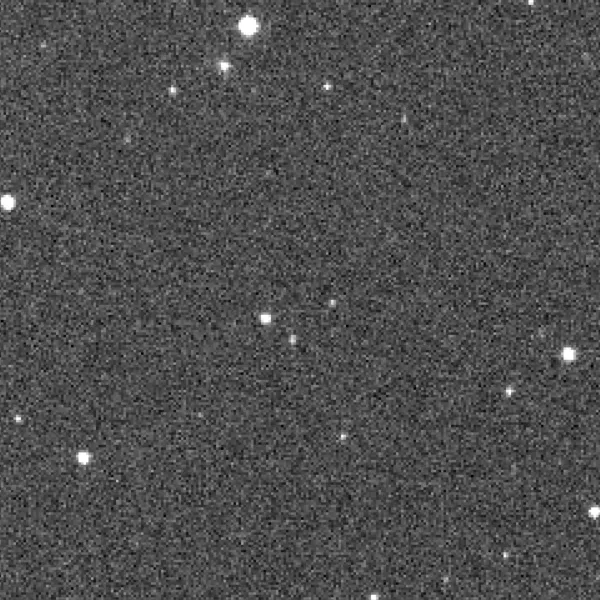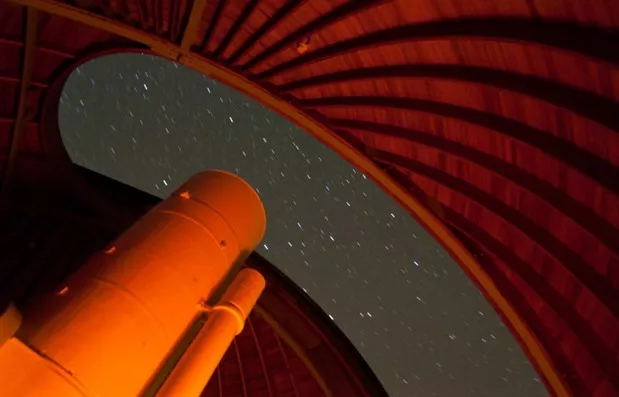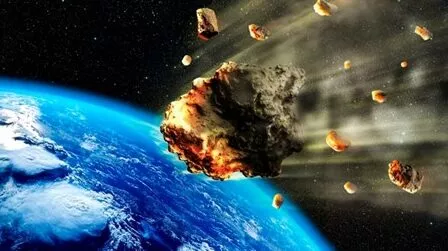On March 11, 2022, astronomer Krisztián Sárneczky, a scientist at the Piszkéstető Observatory of the ELKH Research Centre for Astronomy and Earth Sciences (CSFK), discovered a small asteroid which – in line with predictions – entered the Earth's atmosphere and burned up above the North Atlantic. The discovery is particularly significant, as there have only been four other occasions where the impact of an asteroid entering the atmosphere was predicted in advance.
At 8:24 pm March 11, 2022, using the wide-field CCD camera of the Schmidt telescope situated in the Mátra mountains, Krisztián Sárneczky detected a new, fast-moving and small-sized celestial body in images taken of the constellation of the Great Bear (Ursa Maior). Because there was no visible coma or plume that are characteristic of comets, it was entered into the annals of astronomy as an asteroid under the name 2022 EB5.

After identifying the celestial body, Krisztián Sárneczky began monitoring it. Half an hour after its discovery he had completed a quick calculation of its trajectory. "An hour and a half. That's how long was left until its impact. I had often dreamed of making such a discovery, but I never really believed it would happen, it seemed so unlikely," he said.
"Based on the estimates I submitted to the NEO Confirmation Page website, the official alert chain was initiated. Based on its brightness, it was a 2-3 meter celestial body, and the expected location of its impact was in the Norwegian Sea area, 140 kilometers south of the uninhabited island of Jan Mayen. This meant there was no need to worry about any significant damage,” he added.
The astronomer also pointed out that although there was a very short time available to issue the alert – in the previous four similar cases, from 8 to 21 hours elapsed between discovery and the impact – the system worked relatively well. Though in the case of a celestial body impacting a larger and more hazardous location this would not have been enough time to notify the public, but a larger celestial body would in all likelihood be discovered earlier, which would enable time to issue a broader warning.
In addition to the observation in Piszkető, Enrico Pettarin at the Farra d˙Isonzo Observatory in Italy and Marian Urbanik at the KYSUCE Observatory in Slovakia also spotted the new asteroid on 11 March.

According to NASA's JPL (Jet Propulsion Laboratory) orbit, the 2022 EB5 was close to Earth's orbit when close to the sun and beyond the outermost edge of the main belt of asteroids, but still well within the distance of Jupiter, when distant from the sun. The orbital plane of the small celestial body is at an angle of 10.42 degrees to the plane of the earth's (ecliptic) orbit. The asteroid took approximately 4,769 years to orbit the Sun,and was an Apollo-type near-Earth asteroid.
Among the atmospheric effects of the asteroid, infrasounds caused by entry and interaction with the atmosphere were also recorded by experts with infrasound detectors operating in Greenland and Norway.

Based on ground-based telescope observations and analysis of infrasound effects during the atmospheric pathway of the small celestial body, the 2022 EB5 is thought to have been a small asteroid with a diameter of about 2-3 meters. Its orbit reached the atmosphere of our planet at a speed of about 18 km/s, where it shattered or evaporated (turned into a plasma cloud). Even if there were pieces that remained intact, they probably fell into the Atlantic Ocean. Peter Brown, a researcher at the University of Western Ontario (Canada), said the energy of the collision could have been equivalent to about 2 kilotons of TNT, based on the observed infrasound. By comparison, the US atomic bomb dropped on Hiroshima was about 15 kilotons, and the energy of the meteoroid (superbolida) that exploded over Chelyabinsk, Russia, on February 15, 2013 is thought to have been 500-600 kilotons.
Prior to 2022 EB5, only four small asteroids were known to have been predicted to enter the Earth's atmosphere hours before the event occurred. These were 2008 TC3 (Sudan), 2014 AA (Atlantic), 2018 LA (Botswana) and 2019 MO (Puerto Rico). In the case of the asteroid just discovered, it was also established in advance that its impact did not pose a serious threat as the body would disintegrate and partially evaporate when it entered the atmosphere.
On March 25, the astronomer spotted another 2-4 meter diameter object, which was named 2022 FD1. The celestial body originally seemed to be heading for our planet, but it eventually traveled past Earth at a distance of 8,500 kilometers on March 26, a few hours after its discovery.
The search for small celestial bodies that are traveling close to Earth and pose a potential collision danger to our planet, as well as the tracking of their orbits, are important areas of research in all respects, as this recent Hungarian discovery illustrates. The Piszkéstető Observatory is the largest and best-equipped observatory in Hungary and has been carrying out observations of asteroids and near-Earth asteroids for almost two decades. Krisztián Sárneczky has discovered many asteroids and several supernovae and also helped detect the first meteor of 2022.
Krisztián Sárneczky's Hungarian report on the discovery of the 2022 EB5 asteroid can be read here.
